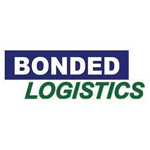Understanding Warehousing: Benefits and Key Processes
In today’s fast-paced e-commerce world, where customer expectations are higher than ever, efficient warehousing is not just a luxury—it’s a necessity. Warehousing ensures that products are available when needed, enhancing supply chain logistics and boosting customer satisfaction. This guide will explore the key processes and benefits of warehousing, providing you with a clear understanding of its critical role in business operations.
Key Takeaways
- Warehousing is vital for efficient business operations, helping manage supply and demand fluctuations, reducing delivery times and costs, and improving customer satisfaction.
- Key warehousing processes include receiving shipments, storage, order picking, packing and labeling, and shipping operations. These are crucial for maintaining inventory accuracy and order fulfillment efficiency.
- Modern warehousing trends include the adoption of smart technologies, sustainable practices, and flexible storage solutions to meet evolving business demands and enhance operational efficiency.
Defining Warehousing
Warehousing is essential for storing products safely before they reach customers. It helps businesses manage inventory and balance supply and demand. A warehouse isn’t just a storage building; it’s a key part of the supply chain, designed to hold goods for sale or distribution.
Strategically placed warehouses can significantly improve logistics by:
- Reducing delivery times
- Cutting shipping costs
- Boosting customer satisfaction
- Enhancing operational efficiency
Well-managed warehousing offers several key benefits, including:
- Purchasing in bulk to reduce costs
- Effective inventory management
- Lowering distribution costs
- Ensuring timely deliveries to customers
In today’s fast-paced supply chains, understanding the power of warehousing is more important than ever.

Key Functions and Processes in Warehousing
To appreciate the importance of warehousing, it’s essential to understand the key functions and processes involved:
Receiving: Accepting goods from suppliers and ensuring they are accounted for and in good condition.
Storage: Placing products in appropriate locations to maximize space and maintain quality.
Order Picking: Selecting and retrieving goods to fulfill customer orders.
Packing and Labeling: Consolidating and securely packing items, then labeling them accurately for shipment.
Shipping: Preparing and transporting products to their final destination.
Each of these steps is crucial for maintaining inventory accuracy and ensuring efficient order fulfillment.
Receiving Shipments
Receiving shipments is the first step in the warehousing process. This involves transferring responsibility for goods from the supplier to the warehouse, ensuring all items are accounted for and in good condition. An efficient receiving system sets the tone for the rest of the warehousing operations. By accurately verifying incoming goods, warehouses can prevent errors and streamline the entire supply chain.
To optimize the receiving process, modern warehouses employ various technologies and equipment, such as power pallet trucks, conveyors, and dimensioning systems. These tools help speed up the processing of incoming shipments, ensuring that products are quickly moved from the receiving dock to their designated storage locations.
Storage Solutions
Once goods are received, the next step is storage. Effective storage solutions are essential for maintaining the quality of goods and optimizing warehouse space. This involves placing products in their most appropriate storage locations to maximize space and labor efficiency. For instance, a chocolate company shipping its products nationwide would require climate-controlled storage to maintain the quality of the chocolates.
Slotting optimization systems can be used to allocate the best storage locations for different types of cargo, further enhancing warehouse efficiency. These systems ensure that products are stored in a way that:
- Reduces damage and losses
- Maximizes space utilization
- Improves picking and replenishment processes
- Increases inventory accuracy
Ultimately, slotting optimization contributes to more efficient warehousing operations.
Order Picking
Order picking is the process of selecting and retrieving goods from storage to fulfill customer orders. This is one of the most time-consuming and expensive activities in a warehouse, accounting for up to 55% of total operating expenses. Efficient order picking is crucial for timely and accurate order fulfillment.
To streamline this process, many warehouses use technologies such as automated pick lists and voice-picking systems. These tools help guide warehouse staff in picking the right items quickly and accurately, reducing errors and labor costs. By implementing these technologies, warehouses can significantly improve their order fulfillment process.
Packing and Labeling
After picking, the next step is packing and labeling the items for shipment. This involves consolidating the picked items, packing them securely, and labeling them accurately for transit. Proper packing and labeling are essential to minimize damage during transportation and ensure that customers receive the correct products.
Warehouse Management Systems (WMS) play a crucial role in the packing process by:
- Automating packing instructions
- Determining the appropriate packaging materials
- Reducing the risk of damage
- Ensuring proper order consolidation
This makes the packing process more efficient and reliable.
Shipping Operations
Shipping operations involve the preparation and transportation of products from the warehouse to their final destination. This process ensures products reach their intended recipients in a timely and efficient manner. It includes reviewing orders, picking goods from storage, packing items securely, and coordinating with carriers for timely delivery. Effective shipping operations ensure that the right products reach the right customers at the right time.
Distribution planning is a critical aspect of shipping operations and supply chain management. By optimizing distribution routes and coordinating shipments, warehouses can reduce shipping costs and improve delivery times. This not only enhances customer satisfaction but also contributes to overall supply chain efficiency.

Types of Warehouses
Warehouses come in various types, each catering to different business needs and offering unique benefits. These include public, private, and bonded warehouses, each with its own set of advantages. Choosing the right type of warehouse is crucial for meeting customer demands, reducing costs, and streamlining supply chain strategies.
Public Warehouses: Public warehouses provide flexible and scalable storage solutions, especially beneficial during seasonal production cycles or when testing new markets without requiring large capital investments. They are ideal for short-term storage and offer affordable options for businesses that do not want to commit to long-term leases.
Private Warehouses: Private warehouses are owned and operated by companies for their exclusive use, providing greater control over inventory and operations. Companies using private warehouses benefit from better control over their inventory, the ability to customize the warehouse to meet specific business needs, long-term cost efficiency, and asset protection. Despite the significant upfront investment, private warehouses provide these advantages.
Bonded Warehouses: Bonded warehouses store imported goods under customs control, allowing companies to defer payment of duties until the goods are released from storage. This provides operational flexibility and can be particularly beneficial for businesses dealing with large quantities of imported goods. For example, a company importing wine can store it in a bonded warehouse until the duty-free period expires, delaying the payment of excise taxes.
Warehouse Management Systems (WMS)
Warehouse Management Systems (WMS) are essential tools for managing warehousing operations and the movement of inventory. A WMS provides real-time management capabilities, reducing errors and optimizing warehouse tasks. By streamlining operations such as receiving, storing, picking, packing, and shipping, a WMS contributes to efficient order processing and reduced operational costs.
Integration of WMS with ERP (Enterprise Resource Planning) and TMS (Transportation Management Systems) ensures:
- Seamless data flow
- Real-time visibility
- Automated order fulfillment processes
- Connected sales channels
- Real-time inventory tracking to prevent stock discrepancies
A WMS offers full visibility into real-time stock levels across each location, optimizing workflows and preventing overstocking and stockouts. It also provides real-time reporting of key performance indicators (KPIs) such as order accuracy and inventory levels, further enhancing warehouse management.
Inventory Management
Inventory management in warehousing involves monitoring stocked goods, tracking inventory levels, ordering and restocking inventory, and demand forecasting. A WMS provides detailed visibility into inventory, tracking goods from receipt to dispatch, ensuring inventory accuracy.
Key aspects of inventory management include:
- Conducting audits
- Optimizing inventory management by meticulously tracking inventory movements, orders, and restocking procedures
- Maintaining optimal inventory levels
- Reducing the risk of stockouts or overstocking
Effective inventory management helps businesses maintain the right balance of stock, ensuring products are available when needed while minimizing carrying costs.
Automation and Technology
Automation and technology play a significant role in modern warehousing. Elements of warehouse automation include automated conveyors, cranes, and storage and retrieval systems coordinated by computers and programmable logic controllers. Technologies such as Automated Storage and Retrieval Systems (AS/RS) and Automated Guided Vehicles (AGVs) enhance efficiency and streamline warehouse operations.
Smart warehouses leverage AI technologies like robots and drones to automate packing, weighing, transporting, and storing materials. The integration of 5G technology facilitates faster data transmission and real-time monitoring of warehouse operations, further improving efficiency.
Real-Time Insights
Real-time insights from a WMS enables informed decision-making by providing:
- Full visibility into real-time stock levels across each location
- Optimization of workflows
- Efficient order routing
- Prevention of overstocking and stockouts
Real-time reporting of key performance indicators (KPIs) such as order accuracy and inventory levels further enhances warehouse management. These insights allow businesses to make data-driven decisions that improve operational efficiency and customer satisfaction.

Warehousing in eCommerce
Warehousing plays a critical role in supporting eCommerce businesses by efficiently storing inventory, managing order fulfillment, and handling returns. Effective warehousing offers a range of benefits for eCommerce businesses, from startups to multinational corporations. Many eCommerce businesses choose to work with third-party logistics companies to avoid the hassle of warehouse management.
Fulfillment companies may use proprietary software to manage orders, picking, packing, and shipping inventory to customers. Amazon fulfillment centers are an example of sophisticated distribution centers that employ advanced technology to handle both incoming and outgoing shipments efficiently.
Storing Inventory for eCommerce: Storing inventory involves placing products in designated locations within a warehouse for efficient inventory storage, tracking, and management. Warehouses act as central points for storing inventory, enabling more accurate tracking and management, which is crucial for eCommerce businesses.
Fulfillment Centers: Fulfillment centers handle order fulfillment for eCommerce businesses, managing processes such as picking, packing, and shipping. These centers ensure that orders are processed efficiently and delivered to customers in a timely manner, enhancing overall customer satisfaction.
Handling Returns: Efficient return processes in warehouses play a critical role in maintaining operational smoothness and customer satisfaction. Key considerations for handling returns include being prepared for returns, receiving, assessing, and processing returned items, as well as providing prepaid return labels and tracking information.
Cost Considerations in Warehousing
Cost considerations are a critical aspect of warehousing, impacting overall business profitability. Warehousing costs include factors such as the cost per square foot of warehouse space, which rose from $8.22 in 2023 to $8.31 in 2024. Additionally, the average storage price per pallet per month increased from $18.30 in 2023 to $20.37 in 2024. These costs can vary based on the warehouse location, the type of storage solutions offered, and the specific needs of the business.
Managing these costs involves careful planning and optimization. For instance, businesses with seasonal fluctuations may find leasing dedicated space costly during low seasons and insufficient during peak seasons. A robust costing system should account for space allocation, handling time, and the number of SKUs, as more SKUs typically lead to higher storage expenses. By considering these factors, businesses can choose the right warehousing solutions to save money, meet customer demand, and drive efficiencies.
Safety and Security in Warehousing
Safety and security are paramount in warehousing, addressing unique health and safety challenges recognized by the National Institute for Occupational Safety and Health (NIOSH) in the United States. Regular training and inspections are essential for ensuring that all employees are knowledgeable in fire safety processes and that all safety measures are in place and functioning as required. A culture of safety, reinforced by managers at all levels, can create a safe and productive warehouse environment.
Warehouses often require emergency plans that address fire safety, exits, and first aid provisions. Ergonomic risks from lifting heavy items, repetitive tasks, and awkward postures can lead to musculoskeletal disorders (MSDs), making it essential to focus on worker safety and ergonomics through the use of wearable tech and ergonomic equipment. Proper training and certification for forklift operators, maintaining clear floors and aisles, and handling hazardous chemicals with proper protocols are all critical components of a safe warehouse.
Recent Trends in Warehousing
Recent trends in warehousing are reshaping the industry, driven by technological advancements and changing business needs. Cutting-edge, smart warehousing integrates IoT devices, AI, and machine learning for real-time inventory tracking and predictive analytics, enhancing operational efficiency. Enhanced data analytics and AI will also soon help optimize more warehouse operations by improving forecasting and decision-making.
Sustainable practices are becoming more prevalent, with warehouses adopting solar power, energy-efficient lighting, and sustainable building materials. On-demand warehousing offers flexible, scalable storage solutions, catering to fluctuating e-commerce demands and seasonal variations. Additionally, customization and personalization trends require warehouses to adapt to handle diverse products and packaging, further emphasizing the need for innovation and flexibility in modern warehousing.

Cadre Technologies: Your Partner in Efficient Warehousing
Cadre Technologies provides advanced warehouse management solutions and supply chain visibility tools for ecommerce, distribution, manufacturing, and 3PL/4PL logistics operations. Our solutions are designed to enhance efficiency, accuracy, and integration across your warehousing processes.
Key Solutions and Features
Cloud-Based WMS Solutions:
- Receiving and Putaway
- Inventory Management
- Order Management
- Multi-Carrier Shipping
- 3PL Billing
- Reporting and Analytics
- Kitting
- Inventory Replenishment
- Labor Reporting
Integration Capabilities:
- Accounting/ERP Systems
- Shipping Systems
- Ecommerce Platforms
- Automation/Robotics
- EDI and API Integration
Benefits of Cadre Technologies
- Enhanced Efficiency: Streamline warehousing processes for faster, more accurate operations.
- Real-Time Visibility: Achieve comprehensive supply chain insights with our advanced tools.
- Flexible Deployment: Choose between on-premise or cloud-hosted solutions to fit your business needs.
Transform your warehousing operations with Cadre Technologies. Explore our website to learn more about our innovative solutions and how we can help your business thrive.
Summary
In summary, warehousing is a pivotal component of the supply chain, encompassing a range of processes that ensure efficient storage, management, and distribution of goods. From receiving shipments to shipping products, each step is crucial for maintaining operational efficiency and customer satisfaction. Understanding the different types of warehouses and leveraging advanced Warehouse Management Systems (WMS) can significantly enhance warehousing operations.
As we look to the future, trends like smart warehousing, enhanced data analytics, and sustainable practices will continue to shape the industry. By staying informed and adapting to these changes, businesses can harness the full potential of warehousing, driving efficiency, reducing costs, and delivering superior service to their customers. Embrace the power of warehousing and transform your supply chain for the better.
Ready to enhance your warehousing operations? Contact Cadre Technologies today and discover how our innovative solutions can help your business thrive.
Frequently Asked Questions
What are the key functions of warehousing?
The key functions of warehousing involve receiving shipments, storage, order picking, packing and labeling, and shipping operations. These are vital for effective order fulfillment and inventory management.
How do Warehouse Management Systems (WMS) improve warehousing operations?
Warehouse Management Systems (WMS) improve warehousing operations by optimizing tasks like receiving, storing, picking, packing, and shipping. They provide real-time inventory tracking, reduce errors, and integrate with other systems for seamless data flow.
What are the benefits of public warehouses?
Public warehouses offer flexible and scalable storage solutions, making them ideal for short-term storage, seasonal businesses, and companies testing new markets. They are cost-effective with no large capital investments required.
How does automation impact modern warehousing?
Automation in modern warehousing enhances efficiency through technologies like AS/RS, AGVs, and drones. This streamlines operations, reduces labor costs, and improves accuracy, greatly impacting overall productivity and competitiveness.
What are the recent trends in warehousing?
Recent trends in warehousing include smart warehousing with IoT and AI integration, sustainable practices, on-demand warehousing, and customization to handle diverse products. These trends drive innovation and efficiency in the industry.










